 Getting a good night’s sleep is essential to your health and well-being, and having a good mattress that suits your body and sleep style can make a world of difference. The experts suggest that you should check your mattress every seven years to ensure that it is still providing optimal support, and helping relieve pressure on your body versus causing pain. If your mattress isn’t helping you get restful sleep, it’s time to replace it.
Getting a good night’s sleep is essential to your health and well-being, and having a good mattress that suits your body and sleep style can make a world of difference. The experts suggest that you should check your mattress every seven years to ensure that it is still providing optimal support, and helping relieve pressure on your body versus causing pain. If your mattress isn’t helping you get restful sleep, it’s time to replace it.
There are plenty of different mattress types, ranging from innerspring to gel memory foam, and they come in different sizes, levels of firmness, and with different materials. So it’s important that you select one that will fit your sleep needs, and will keep you comfortable the whole night through.
Types of mattresses
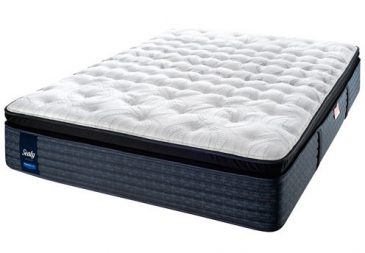 There are four main types of mattresses from which you can choose, though there are others as well, such as air mattresses, crib mattresses, and even waterbeds.
There are four main types of mattresses from which you can choose, though there are others as well, such as air mattresses, crib mattresses, and even waterbeds.
Innerspring Mattress
Innerspring mattresses, also known as coil mattresses, are the most commonly found type of mattresses. They use a steel coil support system made with a set of pocketed metal springs or coils inside, and a comfort layer on the outside made from a variety of foam and fibre materials. Usually, the more coils an innerspring mattress has, and the better the coil design and gauge, the more comfortable it will be. The way the coils are arranged can also impact how to mattress feels when you lie down, so it’s important to test each one out, as not every innerspring mattress will feel the same. (Or any mattress, for that matter.) When lying down on an innerspring mattress, you might find it pretty easy to change positions, which makes them great for those who tend to toss and turn during the night, and change their sleep positions often, or for couples who both sleep in different ways and want a mattress to accommodate both their needs. But they can offer poor motion isolation, so they might not be the greatest option if you tend to always sleep on your back, for example, or your stomach.
Memory Foam Mattress

If you suffer from neck and back pain, you might want to look into getting a memory foam mattress. They mold to the shape of your body, providing good support while you sleep. While it might be a bit harder to change positions in a memory foam mattress versus an innerspring, since you essentially sink into a comfortable spot to can catch some ZZZs, sound sleepers who don’t move a lot at night might prefer them. Memory foam mattresses are also good for cold sleepers, since they tend to keep you warm and toasty. Usually, they are made using materials like visco-elastic or latex foam. Once you get up from the bed, the mattress springs back to its original shape, then contours once again to your body when you lie down and get comfortable.
Gel Memory Foam Mattresses

As an alternative to memory foam, gel memory foam is made with gel added to the foam mattress for an extra layer of support. They also provide a different feel to traditional memory foam. Gel memory foam mattresses can be made using materials like green tea extract and all-natural active charcoal, which can help absorb moisture and eliminate odour – great for those who sweat a lot in their sleep. The material pushes back on the heaviest parts of your body to offer better support where you need it, and offers improved airflow. Unlike memory foam, which is great for cold sleepers, gel memory foam is ideal for hot sleepers who want to be kept cooler at night, since they can more effectively dissipate your body heat. Similarly to memory foam, because gel memory foam contours so nicely to your body, you might find it harder to move around on a gel memory foam mattress versus an innerspring. Gel memory foam mattresses are usually quite durable, and long-lasting.
Latex Foam Mattress
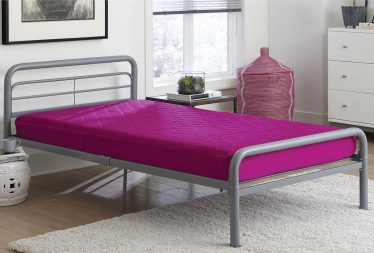
You’ll find latex foam mattresses, made from latex instead of memory foam, in a variety of sizes, including smaller sizes, made for things like bunk beds or rollaway beds, or intended for use while camping or enjoying other similar activities. As an alternative to an innerspring mattress, a latex mattress uses natural versus synthetic materials, including plant or petroleum-based materials, which makes them hypoallergenic. This, then, means they are a good the mattress of choice for those who have severe allergies to different synthetic materials. They offer relatively good support, but you’ll have to check the firmness and plushness to see how it fits the way you sleep.
Different types of mattress firmness
It isn’t necessarily the type of mattress alone that determines the mattress’ firmness, nor is it the type of support. Mattress support, in fact, is different than its level of firmness.

It’s important to note that the perfect level of firmness of a mattress will really depend on an individual person’s opinion and desires, so it’s advisable to try out a mattress before deciding if it is right for you. That said, knowing more about the general levels of firmness can be a good starting guide to knowing what will best suit you.
Soft Mattress
A soft mattress is a good option for side sleepers, since it contours to your body, and can relieve some pressure when you’re positioned this way. It’s also good for light sleepers. But a soft firmness mattress probably won’t provide sufficient support for those who really need to keep their necks and backs supported while they sleep. If you sleep on your stomach or back, you’ll need a firmer mattress.
Firm Mattress
If you most often sleep on your stomach, or tend to sleep quite heavily, a firm mattress is a good choice, since it helps to relieve pressure on your lower back. You might find these mattresses feel very hard when you lie on them, and they might be better suited to men, 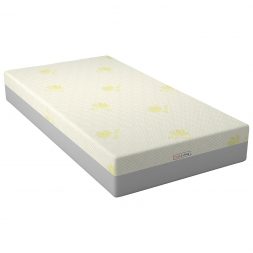 or those who are heavier since they offer a bit of extra support. Some people simply prefer extra-firm mattresses, so it’s all about personal preference, as long as you wake up feeling refreshed and pain-free in the morning.
or those who are heavier since they offer a bit of extra support. Some people simply prefer extra-firm mattresses, so it’s all about personal preference, as long as you wake up feeling refreshed and pain-free in the morning.
Medium-Firm Mattress
The most popular type, not surprisingly, lies somewhere in the middle with a medium-firm mattress that will work equally well for those who sleep on their backs, and those who sleep on their stomachs. These mattresses are not too soft such that you’ll sink in a few inches every time you lie down, but they aren’t extremely firm, and feel like they offer good support, but less give, so to speak.
Mattress size options
Of course the size of mattress you choose will be directly determined by the size of the bedframe you have, or plan to buy. Here’s a breakdown of the main size options.

King-sized mattress
A king-sized mattress, which fits a king-sized bed, usually measures about 76” x 80” in size, and is perfect in rooms large enough to accommodate them, such as a master bedroom. There’s enough space for two people to comfortably sleep, and stretch out; or even to fit a baby or child in between if needed without feeling cramped. If one person tends to move around a lot, or toss and turn, you might want to consider a king-sized bed that will allow them to do so without disturbing the other person’s sleep.
Queen-sized mattress
Measuring 60” x 80” and fitting a queen-sized bed, a queen-sized mattress is a great option for couples who might not have large enough rooms to accommodate a king-sized bed. You can still fit two people comfortably, with the possibility of a small child or baby as well, though it would be a tighter fit than if you had a king.
Double/Full-sized mattress
Fitting what you’d call either a double or a full-sized bed, these mattresses/beds are great for sleeping one or two people. You might buy one for your child’s room, or for a guest room of the home. But for small houses with very small rooms, a double/full-sized 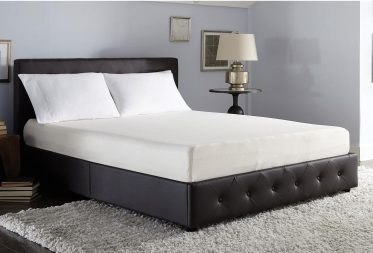 beds can still do the job for two, though it might be trying if one or both people tend to move around a lot, or like to stretch out when they sleep. A double might also be OK for two kids sharing a bed.
beds can still do the job for two, though it might be trying if one or both people tend to move around a lot, or like to stretch out when they sleep. A double might also be OK for two kids sharing a bed.
Single XL/Twin XL or Single twin-sized mattress
Perfect for young children getting their first bed, a single XL or twin XL bed is 39” x 80”, while a single twin bed is 39” x 75” in size. Don’t expect to fit more than one child or adult in such a bed, without feeling like a pair of sardines, though, and risking someone falling out in the middle of the night!
What to look for when choosing a mattress
Before selecting the perfect mattress, consider these important factors.
The type of mattress and how you sleep
When it comes to the type of mattresses, consider how the person/people who will be sleeping in the bed tend to sleep. Do you like to hop into bed and feel extra cool as you sleep, or are 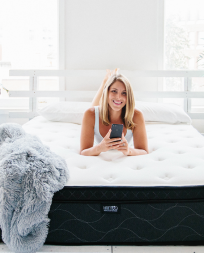 you looking for toasty warmth? Do you sleep on your tummy or back, or constantly move around and want to be able to do so comfortably? If you suffer from neck or back pain, having the right firmness and type of mattress can be crucial to a good night’s sleep.
you looking for toasty warmth? Do you sleep on your tummy or back, or constantly move around and want to be able to do so comfortably? If you suffer from neck or back pain, having the right firmness and type of mattress can be crucial to a good night’s sleep.
For a bed that will accommodate more than one person, you’ll need to find a happy medium. For example, if you both sleep on your backs or sides, but one person is a lot heavier than the other, you might want to opt for a slightly firmer mattress that will better contour to the heavier person, but still offer some flex for the lighter one.
More importantly, after you research the types of mattresses and firmness levels, get out there and try them all out. Lie down on a mattress, whether it’s in a store or at a friend’s house, and see how you feel. Make sure to stay for at least a few minutes so you can see not only how firm the mattress is as soon as you lie on it, but also how it contours to your body as you get comfortable. Move around, lie in different positions, and check your level of comfort, and pressure points.
The materials of the mattress

While you will have a sheet overtop the mattress, you still want to consider the use of materials, and whether you have sensitive skin and/or allergies to any types of material. The safest option is to look for one that is hypoallergenic.
You can also look for things like antimicrobial, or mattresses that are made from organic materials.
If you sweat a lot at night, tend to just generally run hot, or have a home where the air conditioning doesn’t quite get as cold upstairs in the bedrooms as it does downstairs during the hot summer months, look for a mattress that is made from breathable fibres, and that has moisture-wicking technology.
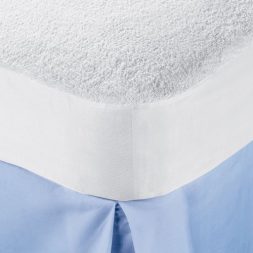
Accessories for mattresses
Once you’ve selected the right mattress, consider useful accessories, like a mattress protector/topper that can keep it protected in the event of accidental spills, or bedwetting from a young child. Mattress protectors can also help protect a mattress against things like bed bugs, and regulate the temperature.
You’ll also, of course, need a nice set of sheets, including a fitted sheet to go over the mattress or mattress protector, and a good set of pillows. Don’t skimp on the pillows, by the way: finding the right pillows is also essential to getting good rest.
Finally, you might want to get a box spring as well to place under the mattress, if the bed-frame is low and you want the bed to be positioned much higher.
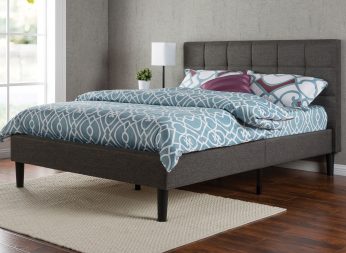 Take the next step
Take the next step
Check out lots of mattresses, of all types, shapes, sizes, levels of firmness, and materials, along with the bedding to go with them, at Best Buy Online.



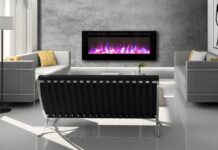
Thank you, Thank you!! Finally my questions have been answered in a detailed but easy to understand format. Yes I could have gone to a salesperson but I hate being pounded upon by an eager beaver or maybe someone who is stretched too thin. It’s my guilt trip and independence nature shining through, no offense to all those salespeople.
Comments are closed.